Does a Pearl Bracelet Rust in Water? The Science of Pearls and How to Keep Them Safe

For generations, people have valued pearls as a reflection of luxury and refinement. The fact that mollusks, living creatures found in the depths of lakes, rivers, and seas, produced these unique treasures makes them special. Consequently, they differ significantly from typical gemstones created from minerals found in the earth's crust.
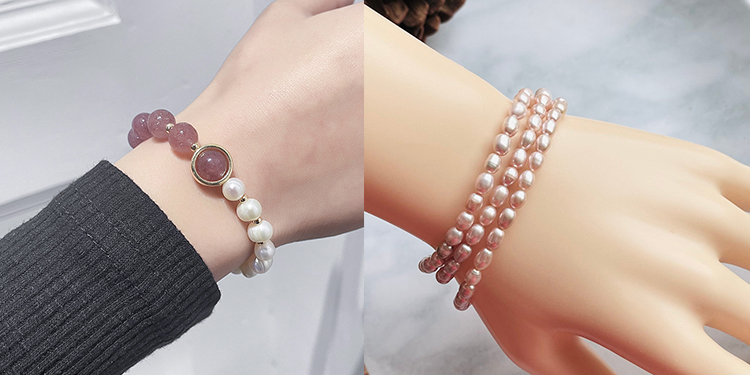
A pearl bracelet is a sort of jewelry consisting of a string of pearls, available in numerous patterns and styles, from simple single-stranded bracelets to more intricate multi-strand bracelets that combine pearls in a range of sizes, shapes, and colors.
However, since they are natural jewels, pearls are highly responsive to their surroundings and need careful management to preserve their brilliance and sheen. Despite the fact that pearls don't contain iron and hence cannot rust, prolonged contact with water can nonetheless degrade pearls over time.
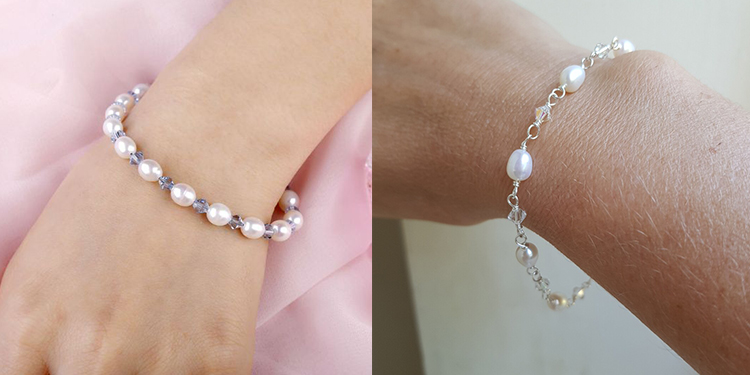
The porous surface of these pearls may soak up water, which can result in degradation, color change, and even damage to the string holding the pearls together. So, being aware of the dangers of subjecting your pearl bracelets to moisture and harsh chemicals may save you money by eliminating the need for expensive repairs or replacement.
Furthermore, understanding how to care for your pearl bracelet can help you keep it in great shape for many years and minimize damage.
Additionally, being aware of the dangers connected to contact with water and other chemicals while buying a pearl bracelet helps you make a prudent decision. Other variables that may impact the bracelet's longevity include the pearl used, and the string's quality, among others.
Understanding Pearls and Their Composition
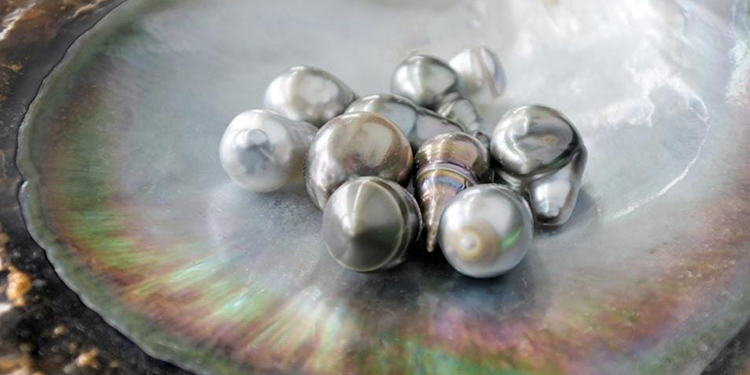
A mollusk's defensive mechanism against foreign items or irritants that infiltrate its shell causes pearls to grow inside the soft tissue of several mollusks, including oysters and mussels.
The mollusk protects against any irritants within its shell, including sand or parasites, with coatings of nacre, a crystalline material primarily composed of calcium carbonate. The layers accumulate over time as a result of the constant production of nacre, finally creating a pearl.
The main component of pearls is calcium carbonate, organized in the crystal form known as aragonite. Moreover, pearls include trace quantities of other chemical compounds, including polysaccharides and proteins.
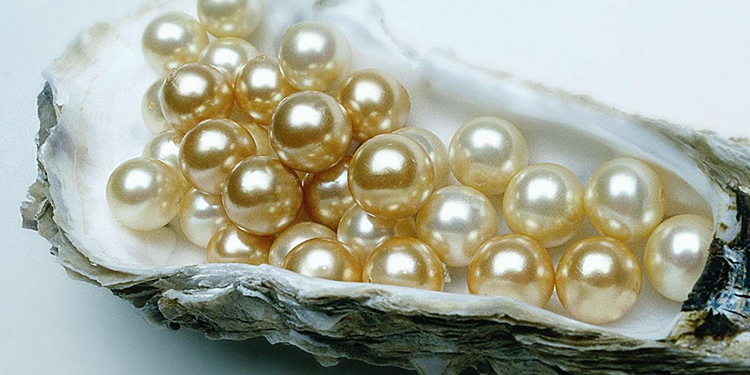
In contrast to other jewels, pearls are rather sensitive despite their hardness. This feature is because pearls compose majorly of several nacre layers, stacked in thin, flat layers. Furthermore, they can easily split into separate pieces in the event of stress, exposure to moisture, or extremely high temperatures.
On the Mohs scale, which assesses a gemstone's resistance to scratching, pearls show a low hardness value. Diamonds, for instance, have a hardness of 10, whereas pearls typically have a hardness of 2.5 to 4.5. This result implies that tougher things like rocks or concrete may readily scratch or harm pearls.
So, you should handle pearls carefully to preserve their beauty and lifespan due to their fragility. They must not be subject to extreme temperatures or chemicals. Additionally, it's necessary to handle pearls carefully and keep them away from water and other jewelry.
Composition of Pearls and How They Differ From Metals
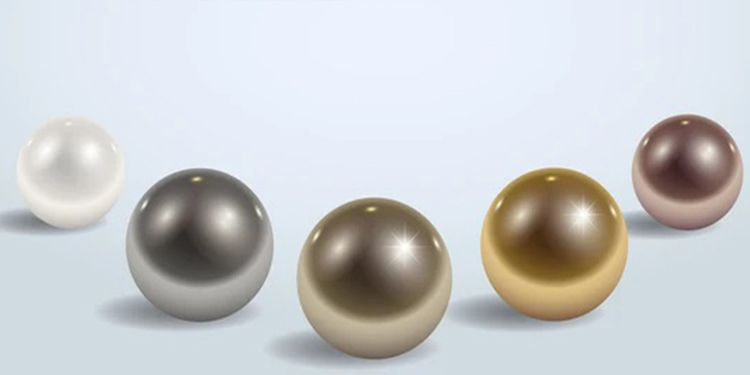
Composed of calcium carbonate, the same substance that makes up mollusk shells, pearls develop when an irritant, like a sand particle, penetrates the soft tissue of a mollusk. Nacre, a material secreted by the mollusk, gradually covers the irritant progressively over time, resulting in the formation of a pearl.
Contrarily, metals are essentially hard, dense, and lustrous chemical elements or alloys, composed of atoms arranged in a lattice and joined by metallic bonds. Furthermore, metals are often excellent heat and electrical conductors and frequently employed in various sectors, including building, electronics, and transportation.
The fundamental distinction between metals and pearls is the composition of each. In contrast to the metallic constituents and alloys that make up metals, nacre, and calcium carbonate make up pearls. In addition, pearls are naturally organic, whereas metals are inorganic.
Moreso, pearls differ from metals in terms of texture and appearance since they have a smooth, glossy surface that is frequently iridescent. In contrast, metals are typically shiny but vary in terms of their appearance and texture based on the metal. Lastly, pearls are more delicate and sensitive than other metals, which are stronger and more resilient.
Factors Affecting Pearl Bracelets in Water

Pearl bracelets are susceptible to damage from dampness and water. Without a doubt, pearls are natural jewels created by live aquatic organisms like mussels and oysters, so moisture and water are essential to a pearl's existence. However, prolonged contact with these elements might harm the pearls.
Long-term exposure to humidity can cause pearls to absorb the moisture and expand, thereby dulling their surface and reducing their shine. Also, tainted or chemically-laced water can harm the pearls' surface, causing them to seem damaged or uneven.
The silk thread that connects the pearls can also stretch, become brittle, or even break when exposed to water. As a result, you could risk the loss of pearls when it falls off the bracelet or extensive damage.
However, pearl bracelets can react differently to various types of water.
Saltwater
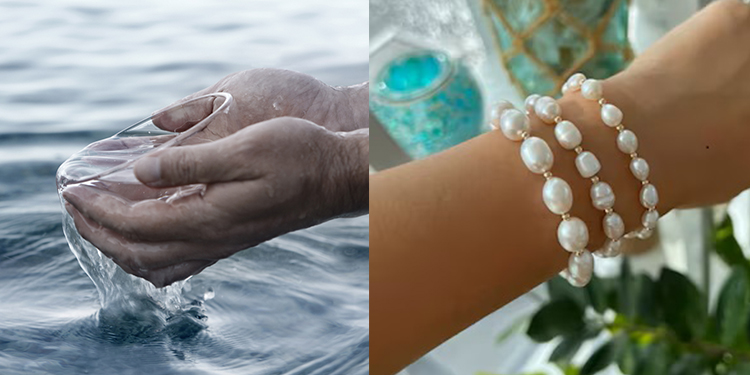
Pearl bracelets are particularly vulnerable to damage from saltwater because the high salt concentration over time can erode the pearls' surfaces, causing irreparable injury. Moreover, the salt causes the pearls to dry out, resulting in cracks and loss of shine.
It is best to keep pearl bracelets out of saltwater or clean them with clean water after contact.
Chlorinated Water

Pearl bracelets can potentially suffer damage from chlorinated water found in swimming pools. Pearls may become stained and lose their shine due to chlorine in the water.
The silk thread required to string the pearls can also become weakened by the chemicals in the water, breaking and letting the pearls fall off. Although it's better to keep pearl bracelets out of chlorinated water, if unavoidable, you should appropriately clean them with clean water after contact.
Tap Water
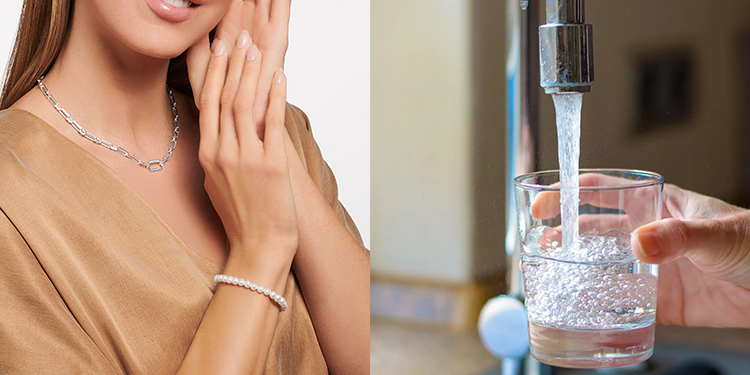
Tap water can also affect pearl bracelets, especially if it has significant concentrations of minerals like magnesium, calcium, or iron. The pearls may eventually turn pale and lose their shine as a result of these minerals.
After being exposed to tap water, it is necessary to carefully clean pearl bracelets with a microfiber cloth or rinse them off with distilled water.
To maintain the beauty and lifespan of pearl bracelets, keep them out of water for as long as possible. You should properly clean the bracelet and dry it afterward to reduce any potential damage when it contacts water or moisture.
In addition to water and moisture, other factors have a negative impact on pearl bracelets.
Some of these factors include:
Soap
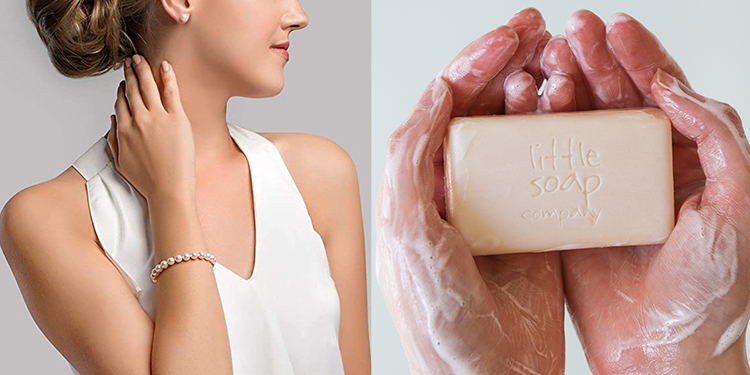
Due to its potential for abrasion and dangerous chemicals that may harm the surfaces of the pearls, soap can be extremely harmful to pearl bracelets. You should quickly clean pearl bracelets with clean water after coming into touch with soap and then carefully dry them with a soft towel.
Also, it's preferable to steer clear from wearing pearl bracelets when using soap, detergents, or other cleaning supplies.
Temperature

Extreme temperatures, in particular, may have a detrimental impact on pearl bracelets. Heat can damage the silk thread and result in the expansion of pearls, which might lead to the bracelet stretching or breaking.
On the other hand, freezing temperatures can make the pearls fragile and break. Avoid subjecting pearl bracelets to severe heat or cold; preserve them at room temperature instead.
Hairspray and Perfumes

Hairspray and perfumes both include chemicals that can harm pearls' surfaces in a number of ways. As a result, it is essential to either refrain from putting on pearl bracelets when using these products or to do so after they have completely dried.
How to Care for Pearl Bracelets

Caring for pearl bracelets is important to maintain its luster and beauty. However, some common mistakes pearl owners make while caring for their pearls include:
Exposure to Harmful Substances
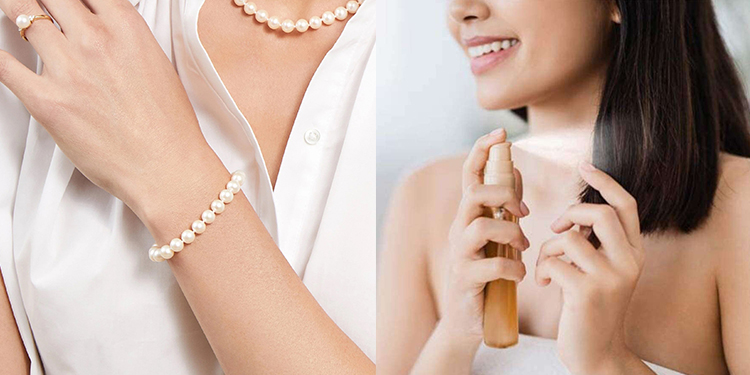
Perfumes, hairspray, and other chemicals, as well as cleaning supplies, can be particularly irritating to pearls. While using these items, DON'T wear your pearl bracelet, and be careful to completely clean the pearls if they come into touch with any chemicals.
Storing With Other Jewelry
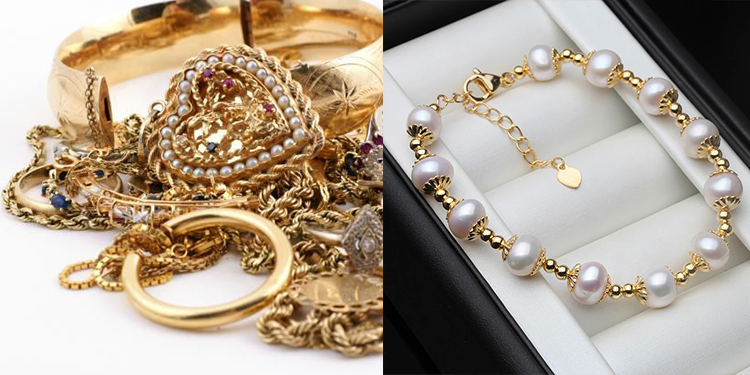
The pearls in your pearl bracelet risk scratches or extreme damage if you store them alongside other jewelry. In a plush pouch or jewelry box, keep your pearl bracelet away from other jewels.
Inconsistent Wearing of Pearl Bracelet
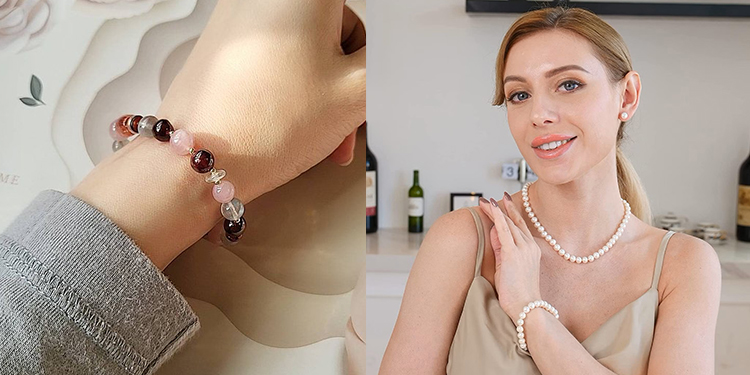
Wearing your pearl bracelet frequently can help keep the pearls from drying out and snapping since they require moisture to remain hydrated.
Cleaning Pearls With Abrasive Materials
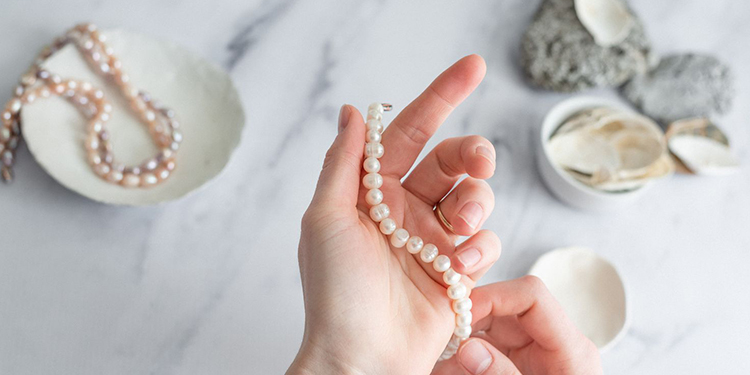
While cleaning your pearl bracelet, stay away from abrasive items like scrub pads or toothbrushes. These substances have the potential to scuff pearls' surfaces and harm silk thread.It's important to care for your pearl bracelets to ensure their shine and longevity.
Best Tips for Maintaining the Quality and Beauty of Pearl Bracelets
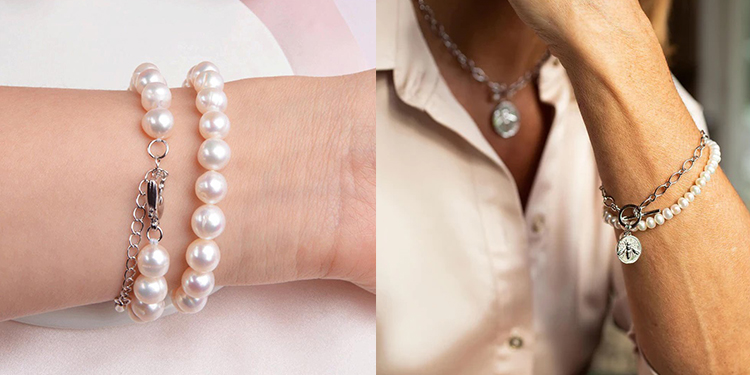
To properly care for your pearl bracelets, these tips are important:
● To prevent cracks and other damages, keep the pearl bracelet in a jewelry box or soft pouch while not in use.
● After each use, carefully clean the pearls with a soft, moist cloth to eliminate accumulated oils, grime, or sweat.
● The bracelet may snap, or the pearls may fall off if the silk thread becomes brittle or stretches. Based on how frequently you wear it, we advise having your pearl bracelet restrung often.
● The pearl bracelet may be cleaned and evaluated by a qualified jeweler to make sure the pearls are of great quality and that the bracelet is in excellent condition.
Conclusion

Unlike metals, pearl bracelets do not corrode, but they can lose their shine or color when in contact with water or other liquids that contain chemicals like salt, minerals, or chlorine. To guarantee that your pearl bracelet keeps its beauty and quality, it is crucial to properly care for it and keep them far away from water and moisture.


Leave a Comment